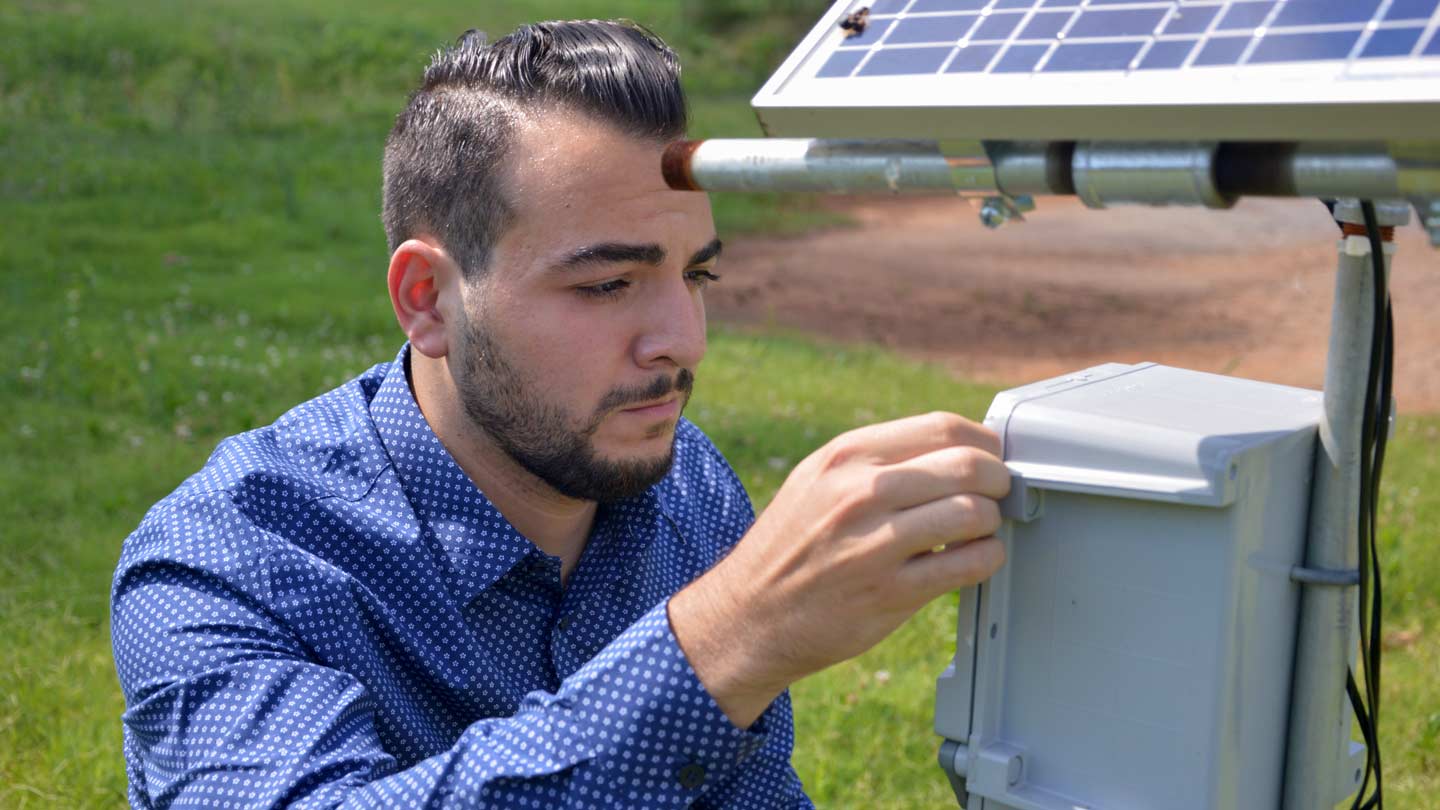
Julian Longoria, a senior majoring Earth system science at UAH, is studying the impact that both urban geometry and land use have on outdoor thermal comfort.
When you have only three months to complete a research project, it can feel like a 12-week sprint – especially if the project includes building hardware. "You have to work quickly, and half the time I was building equipment," says Julian Longoria, a senior Earth system science major at The University of Alabama in Huntsville (UAH).
As a participant in UAH's Research or Creative Experiences for Undergraduates (RCEU) program, Longoria is spending the summer working with Dr. Leiqiu Hu on a project to study the impact that both urban geometry and land use have on outdoor thermal comfort.
The hardware in question is a pair of low-cost portable weather stations – "relatively low cost, depending on how many boards I fried," laughs Longoria. When combined with a similar existing station, they give Longoria the tools needed to do a quick study of microclimates in and near UAH.
One station is set up beyond the outfields of the UAH baseball and softball fields. Another is in the yard of the house where Longoria lives not far from campus, while the third is near the Bridge Street Town Centre. "I want to learn how different urban layouts effect meteorological variables, especially how they influence the outdoor thermal comfort index," Longoria says. "That's a measure of how heat is perceived by a person outdoors."
The project is a spinoff of Dr. Hu's work studying heat stress and related topics using data collected by satellite instruments. While satellites provide useful data, that information has relatively low resolution: each pixel is about one square kilometer and data for each location is collected only four times a day. The portable ground stations provide higher resolution data with measurements taken every 15 seconds, which could capture diurnal temperature and humidity changes not found in the satellite data.
While the summer research project might provide insight into possible future work, Dr. Hu says the primary purpose is for Longoria to gain hands-on experience in real-world research. "My goal is to let him see what graduate-level research looks like," says Dr. Hu, an assistant professor the Department of Atmospheric Science. "It's a good start, learning the process, collecting data, and doing a literature review. The student should learn how to ask the proper questions."
While Longoria is analyzing data collected in late June and early July, he understands the program's focus. "This is my first research project, and it's been a huge learning process," he says. "And I've learned so much. It means a lot to me."
Contact
Department of Atmospheric Science
256.961.7755
ats@uah.edu